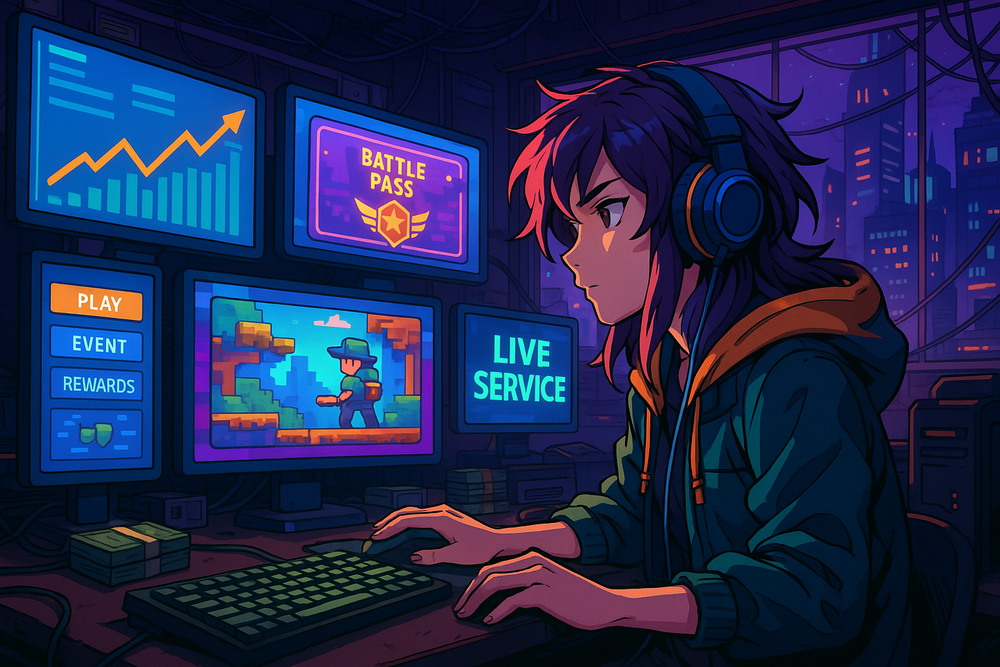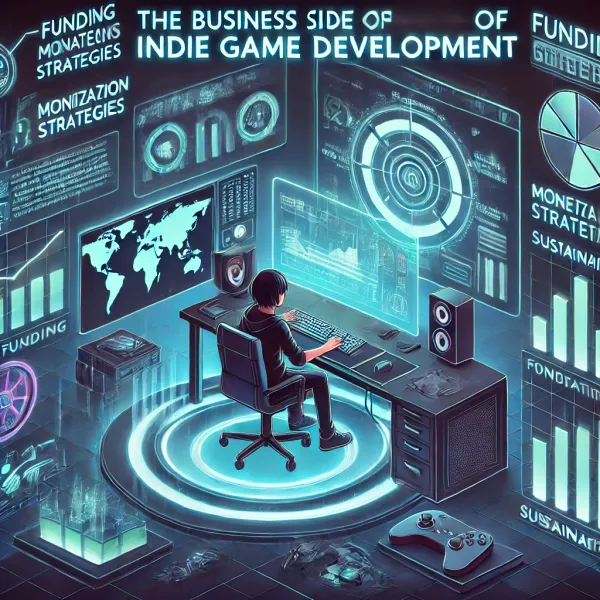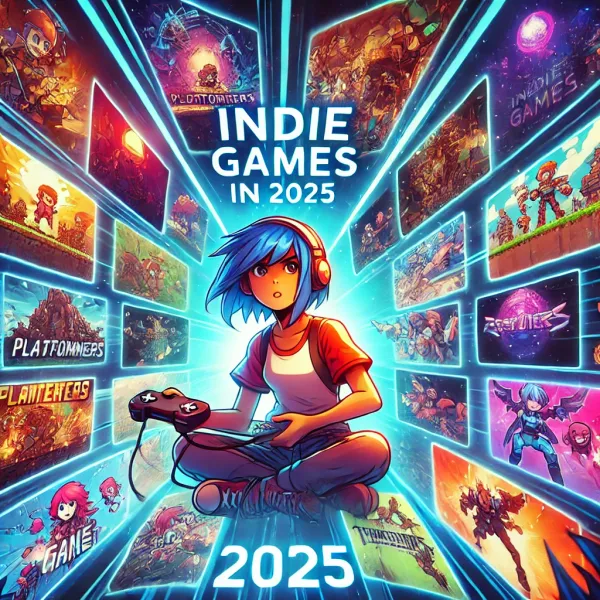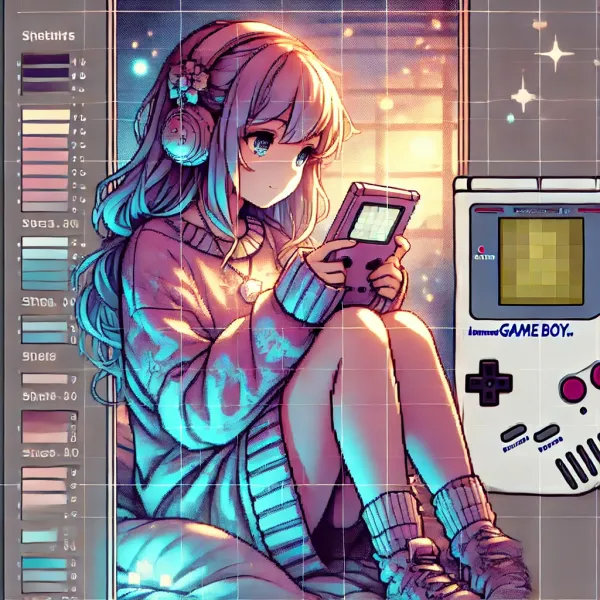The evolution of Live-Service models in indie games
In 2024 the indie game scene proved surprisingly robust. Analytics firm VG Insights reports that indie titles made up 98.9% of Steam releases in early 2024, yet still brought in ~48% of store revenue. At one extreme, blockbuster “games-as-a-service” titles continue to dominate budgets and revenue; at the other, ultra-cheap passion projects vie for attention. In the middle – mid-range indies – the profit margins are razor-thin. As a result, indie studios are adopting a variety of strategies to keep players engaged and pay the bills. Some are embracing live-service practices (regular updates, seasons, battle passes), while others double down on traditional premium models. This shift reflects broader industry trends: critics note that many AAA publishers now treat game design as “building machines to keep players engrossed and spending”, and a 2024 Devcom survey found 89% of developers agreed that a premium game can succeed without any microtransactions. Indie creators are watching these trends closely.
Balancing monetization and indie values
Many indie developers remain wary of aggressive monetization. As one industry blog puts it, the allure of “instant riches” – from NFTs or predatory in-app purchases – is a “siren song” that can undermine player trust. Instead, successful indies often favor fair pricing, DLC expansions, or cosmetic-only stores. For example, data shows that nearly 90% of game devs feel premium games are financially viable without any microtransactions. As a result, indie studios frequently reject pay-to-win mechanics that can erode engagement: “Games that heavily rely on pay-to-win often experience a rapid decline in player engagement. It’s a short-sighted strategy with long-term consequences”, warns the Wayline indie blog.
Common approaches among indies include:
- Premium or Buy‑to‑play with expansions: Many indies charge a fixed price for the base game and later release optional DLC or expansion packs (either free or paid). This avoids the pitfalls of daily monetization and respects players’ one-time investment.
- Cosmetic and convenience IAP: When indies do include in-app purchases, they are usually limited to nonessential cosmetics or convenience items. This lets dedicated fans spend on personalization, without affecting core balance.
- Subscription and funding models: A few indies leverage subscriptions (e.g. through Apple Arcade or Xbox Game Pass) or crowdfunding rather than constant grind. These models can provide revenue without fragmenting gameplay.
- Community support (Merch, Patreon): Some smaller devs supplement income with merchandise sales or Patreon tiers, keeping the game itself uncluttered by monetization.
Together, these strategies form a “meta‑layer” of revenue that is lighter than full live‑service gimmicks. As Palworld’s devs put it, they want to give creators “financial freedom to make games they want” – not trap them with “stinky rule-makers and bullies” demanding unfair hooks. Many indie teams thus insist on transparent, player-friendly monetization.
Retaining players through community and content
With monetization taken care of, indies focus heavily on player retention through content and community. Small teams often move at their own pace, but the key is consistent engagement. Games in Early Access or “live beta” form benefit from close community involvement. For instance, Nova Drift – a solo-developed roguelite shooter – spent five years in Early Access, iterating almost constantly with player feedback. Its developer involved the community at every step and even crowdsourced translations and features. The result was explosive loyalty: Nova Drift maintained a 98–100% positive Steam review score for years, ultimately selling ~396,000 copies by August 2024. As the developer noted, listening to players taught him crucial skills and kept the game evolving instead of stagnating.
Other indies use seasonal events and patches to keep fans invested. Palia, a new “cozy MMO” from Singularity 6, launched as a free-to-play open beta in 2023. Its team explicitly promised players it would be a “continuous, ongoing effort,” with “patch updates with new content, improvements, and bug fixes well into the future”. By signaling ongoing support, they manage community expectations and reward players who stick around. Likewise, Palworld (a Japanese indie hit) has flooded players with updates: in 2024, Pocketpair added entire new islands, boss encounters, weapons and even PvP modes. Despite facing a legal challenge over its concept, the devs kept working — by year’s end Palworld delivered a massive “Feybreak” expansion and laid out plans for paid DLC plus free seasonal content in 2025. These moves keep the community excited and willing to invest time (and sometimes money) over many months.
In practice, this means indies often juggle a mix of releases: major expansions, minor patches, and community events. The pacing is generally slower than triple-A: a mid‑size studio might ship a big content drop once or twice a year, with smaller patches in between. But even modest games can adopt live-service elements in scaled-down form – think a battle pass of cosmetic unlocks, or a series of developer livestreams unveiling roadmap plans. The goal is the same: offer reasons to log in repeatedly, whether through in-game events or the social glue of forums and Discord.
Case studies: Indie Live-Service in action
- Nova Drift (USA) – A top-down space roguelite by solo dev Jeffrey Nielson. He relied on 5 years of Steam Early Access, integrating continuous player feedback. The community-driven approach paid off: Nova Drift sold ~396k copies by mid-2024 and holds an Overwhelmingly Positive rating. It serves as a poster child for small-team live games done well.
- Palworld (Japan) – A Pokemon-inspired survival-looter by Pocketpair. Released January 2024 on PC and Game Pass, it attracted 25+ million players in a month. Instead of resting on its laurels, the team repeatedly added content – new islands, bosses, even PvP – through free updates. Pocketpair has publicly outlined future updates as a mix of “paid DLCs and free seasonal content”, blending revenue with player goodwill. Importantly, Palworld’s developers emphasize creative control over forced monetization: as their comms director says, they’ll “do whatever you want… giving devs the financial freedom to make games they want”.
- Palia (USA/Canada) – A “cozy MMO” by Singularity 6, now in open beta on PC. It is explicitly free-to-play, and the devs frame it as an ongoing service: “the game remains… in Open Beta… continuous, ongoing effort, committed to providing patch updates with new content… well into the future.”. This communication strategy manages expectations on a platform (PC/console) usually used to one-time purchases, showing how indies can pivot toward service models even on Steam.
- Other Indies – Throughout 2024–25, dozens of smaller indies adopted parts of the service playbook. Some (like Lost Ark or Hand of Atlas) added cosmetic shops; others hold live events (seasonal festivals, contests, etc.). A few experimented with limited battle passes for cosmetics or extra modes. (Notably, Devcom found that most developers consider such passes unnecessary in premium games.) And even narrative indies often keep communities engaged via developer diaries, mod tools, and free post-launch updates.
Collectively these examples show a spectrum: at one end, indies mimicking live ops (regular fixes, evolving content); at the other, indies bucking the trend and focusing on a polished core. Either way, the constant is community interaction: devs host active Discords, solicit feedback on Twitter and Steam forums, and reward fan creativity (modding support is often praised). This two-way dialogue itself drives retention, as players feel ownership in the game’s direction.
Platform and regional factors
Live-service strategies also depend on platform norms. On mobile, free-to-play is the default, so indie devs often embrace ad-driven or gacha-style systems (though even here the focus is shifting: new EU laws force platforms to allow alternative stores and payment methods, which could make it easier for small devs to avoid exorbitant fees). On PC and consoles, players typically expect a single purchase. In those markets, some indies sidestep live models entirely. But others use Early Access (Steam, Xbox Game Preview) or Game Pass/Arcade deals as proxies for live-services. For example, many indie titles (such as Hades, Spiritfarer, etc.) launched on Game Pass, drawing subscribers without needing microtransactions. Meanwhile, subscription services themselves (Apple Arcade, EA Play, etc.) offer indies another avenue: a guaranteed payout per download instead of warping gameplay.
Geography also colors the picture. In Asia, live ops are already mainstream thanks to mobile gaming culture; a successful indie there might naturally launch free-to-play with cosmetics (think Chinese or Korean indies on mobile). In the West, devs often come from a premium PC/console tradition and may resist F2P out of philosophy. Regional funding and platform support vary too – for instance, Japan’s console market has always valued one-off purchases, whereas Southeast Asian indies often chase the mobile gacha model. That said, globalization blurs these lines: Palworld’s global smash came via PC and Xbox, and Palia’s Canadian team is marketing worldwide with live-update promises.
Regulatory changes also matter. The EU’s Digital Markets Act (DMA) mandates alternate app stores and payment options on mobile. This could democratize mobile distribution (good for solo devs), but also intensify competition. On PC, stores like Steam continue dominating discovery, so indie devs still pray for algorithmic boosts (as Nova Drift did via Vampire Survivors visibility). Console indies navigate stricter publishing gates, often relying on indie showcases or ID@Xbox/PlayStation support programs. In all regions, however, communities themselves are borderless, and a savvy indie can run Discord servers and social channels in multiple languages – Nova Drift even crowdsourced translations into Russian, Chinese, and more.
The road ahead
Indie games are carving out their own path through the live-service landscape. They have the luxury (and challenge) of learning from big-budget lessons. Industry commentators suggest this could lead to a “downsizing” of games in general – favoring smaller, creative teams over sprawling productions. Indie developers, with their lower overhead and experimental spirit, might be “prepared” for this shift, focusing on bold ideas and niche genres instead of photorealism. But even within small-scale projects, the influence of live-service thinking is clear: whether by necessity or choice, many indies now think of launch day as just the beginning, not the end.
Ultimately, the evolution of indie live-service models is still unfolding. In 2024–25 we’ve seen a surge of indie revenue and attention, and a corresponding split in strategies. Some developers double down on player-centric servicing (frequent updates, strong community ties), while others resist the churn and stick to classic game release plans. What’s certain is that community interaction, thoughtful content pacing, and sustainable monetization will continue to define which indies thrive. As one dev put it, making great games “was just what game development was in the past” – indie studios may now lead the charge in reshaping how games live on into the future.




